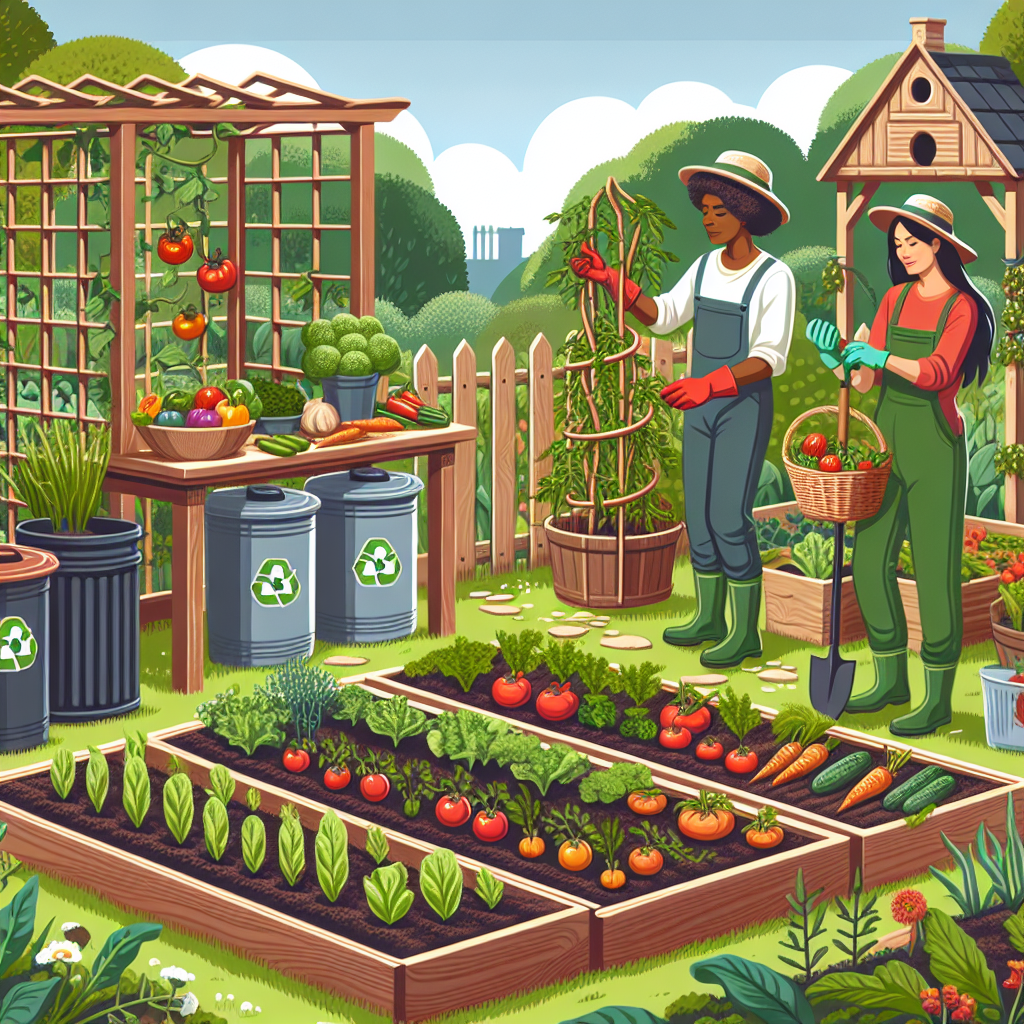Building a Sustainable Vegetable Garden
Are you tired of buying vegetables from the grocery store that are grown with harmful pesticides and shipped from thousands of miles away? Why not take matters into your own hands and build a sustainable vegetable garden right in your backyard? Not only will you have access to fresh, organic produce, but you’ll also be reducing your carbon footprint and promoting a healthier environment. In this article, we will guide you through the step-by-step process of building your own sustainable vegetable garden.
Step 1: Choose the Right Location
The first step in building a sustainable vegetable garden is to choose the right location. Look for an area in your yard that receives at least six hours of direct sunlight each day. Avoid areas that are shaded by trees or buildings, as vegetables need ample sunlight to grow. Additionally, make sure the location has access to water, as regular watering is essential for the health of your plants.
Step 2: Prepare the Soil
Once you’ve chosen the location, it’s time to prepare the soil. Start by removing any weeds or grass from the area. Then, loosen the soil using a garden fork or tiller. This will help improve drainage and allow the roots of your vegetables to penetrate the soil more easily. If your soil is compacted or lacks nutrients, consider adding organic matter such as compost or well-rotted manure to improve its quality.
Step 3: Plan Your Garden Layout
Before you start planting, it’s important to plan your garden layout. Consider the size and spacing requirements of the vegetables you want to grow. Some plants, like tomatoes and peppers, need more space, while others, like lettuce and radishes, can be planted closer together. By planning your layout in advance, you can maximize the use of space and ensure that each plant has enough room to grow.
Step 4: Start Planting
Now it’s time to start planting! Begin by digging small holes or furrows for your seeds or seedlings. Follow the planting instructions on the seed packets or plant labels to determine the appropriate depth and spacing for each plant. Gently place the seeds or seedlings into the holes and cover them with soil. Water the newly planted vegetables thoroughly to help them establish their roots.
Step 5: Provide Proper Care
Once your vegetables are planted, it’s important to provide them with proper care to ensure their growth and productivity. Here are some key care tips:
- Water regularly: Vegetables need consistent moisture to thrive. Water them deeply at least once a week, or more frequently during hot, dry weather.
- Fertilize appropriately: Use organic fertilizers or compost to provide essential nutrients to your plants. Avoid synthetic fertilizers, as they can harm the environment.
- Control pests naturally: Instead of relying on chemical pesticides, try natural pest control methods such as companion planting, handpicking pests, or using organic insecticides.
- Monitor for diseases: Keep an eye out for any signs of diseases or infections in your plants. Remove infected plants immediately to prevent the spread of disease.
- Harvest regularly: Harvest your vegetables when they are ripe to encourage continuous production. Regular harvesting also prevents over-ripening and spoilage.
Step 6: Maintain Sustainability
Building a sustainable vegetable garden goes beyond just growing organic produce. It’s about adopting practices that promote long-term environmental health. Here are some ways to maintain sustainability in your garden:
- Compost kitchen scraps: Instead of throwing away your food waste, compost it to create nutrient-rich soil for your garden. This reduces landfill waste and eliminates the need for synthetic fertilizers.
- Use rainwater: Install a rain barrel to collect rainwater and use it to water your plants. This conserves water and reduces your reliance on municipal water sources.
- Encourage beneficial insects: Plant flowers and herbs that attract beneficial insects like bees and ladybugs. These insects help pollinate your plants and control pests naturally.
- Rotate crops: Practice crop rotation to prevent the buildup of pests and diseases in the soil. This involves planting different vegetable families in different areas of your garden each year.
- Save seeds: Save seeds from your best-performing plants to use in future seasons. This not only saves money but also helps preserve heirloom varieties and promotes seed diversity.
Conclusion
Building a sustainable vegetable garden is a rewarding and fulfilling project that allows you to take control of your food supply and contribute to a healthier planet. By following the steps outlined in this article, you can create a thriving garden that provides you with fresh, organic produce year-round. Remember to choose the right location, prepare the soil, plan your garden layout, start planting, provide proper care, and maintain sustainability. Happy gardening!






